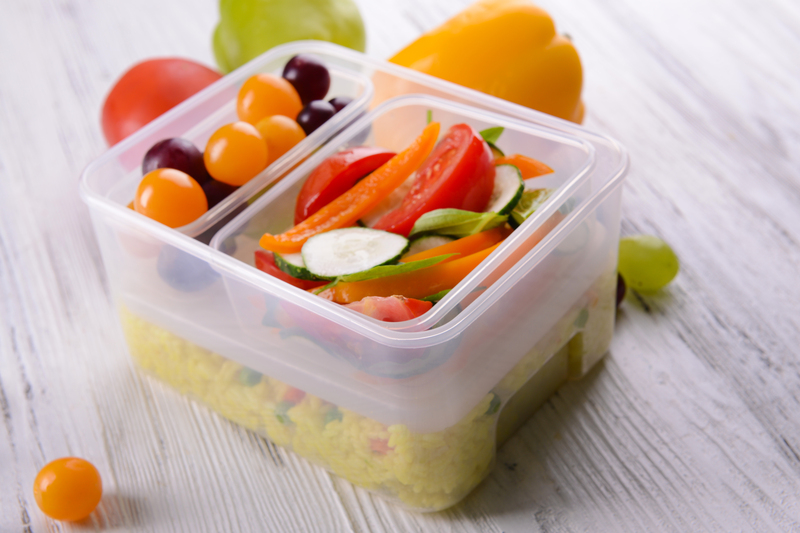Donate or Recycle Pots and Pans Instead of Sending Them to Landfills: The Sustainable Choice
Every year, millions of pots and pans are thrown away, ending up in landfills where they contribute to environmental pollution. Have you ever considered what happens to your old cookware when you replace it? Rather than discarding them, you can make a positive impact by choosing to donate or recycle old pots and pans. This comprehensive guide explores how you can give your unwanted cookware a second life, helping the planet and those in need.
Why It's Important Not to Throw Away Old Pots and Pans
When you dispose of pots and pans in the regular trash, they almost always end up in local landfills. Unlike food waste or biodegradable materials, cookware is typically made of materials like stainless steel, aluminum, and nonstick coatings that do not decompose easily. Here are some key reasons to donate or recycle cookware:
- Reduce Landfill Waste—Cookware takes decades, if not centuries, to break down.
- Conserve Resources—Recycling metals from pots and pans saves raw materials and energy.
- Help Others—Donated cookware can benefit families, shelters, and community kitchens.
- Protect Wildlife—Less landfill waste means less pollution in natural habitats.
Environmental Impact of Discarding Pots and Pans
When pots and pans are tossed out, they often release harmful chemicals--especially from non-stick coatings and synthetic handles. Metal leaching can contaminate soil and water, posing threats to wildlife and human health. By choosing to repurpose, donate, or recycle your cookware, you're not just cleaning out your cabinets; you're actively fighting environmental degradation.
How to Donate Pots and Pans
If your cookware is still in usable condition, donating is a fantastic option. Many kitchens, shelters, charities, and community organizations can make good use of gently-used pots and pans. Here's how you can give your cookware a second life:
Where to Donate Used Cookware
- Thrift Stores: Organizations like Goodwill, Salvation Army, and local thrift shops often accept used kitchen items.
- Homeless Shelters: Many shelters run kitchens and are grateful for practical cookware donations.
- Soup Kitchens: Charitable soup kitchens and food banks may need pots and pans for meal preparation.
- Refugee and Immigrant Support Groups: These organizations help families start new homes and often request kitchen basics.
- Online Community Groups: Platforms like Freecycle, Nextdoor, or local Facebook groups connect you with neighbors in need.
Prep Your Pots and Pans for Donation
Before donating, wash each item thoroughly and check for any major damage (like broken handles or deep rusts). Most donation centers prefer cookware that's clean, safe, and free from excessive wear.
Tip: Include lids if you have them--complete sets are especially appreciated!
Tax Benefits of Donating Kitchenware
Did you know that donating your pots and pans can sometimes qualify as a tax-deductible charitable contribution? Always ask the receiving organization for a receipt and keep a list of the items you give away. While the IRS does not assign specific values to donated items, guidelines are available to estimate fair market value.
How to Recycle Pots and Pans
If your cookware is too worn out to donate, recycling is the next best option. Recycling pots and pans helps reclaim valuable metals and keeps waste out of landfills.
What Types of Cookware Can Be Recycled?
Most pots and pans are constructed from recyclable materials:
- Aluminum
- Stainless Steel
- Copper
- Cast Iron
Nonstick pans and cookware with plastic, silicone, or wooden handles may need special treatment. Some facilities require that non-metal components be removed first.
Where to Recycle Old Pots and Pans
- Municipal Recycling Centers: Most local facilities accept metal cookware, especially if it's 100% metal.
- Scrap Metal Yards: These businesses pay small amounts for scrap metals and accept a wide range of items.
- Manufacturer Take-Back Programs: Some companies offer in-house recycling, particularly for non-stick pans.
- Retailer Recycling Programs: Major retailers sometimes offer trade-ins or recycling initiatives for kitchenware.
How to Prepare Pots and Pans for Recycling
Follow these general steps to ensure your cookware is accepted for recycling:
- Remove Non-Metal Parts: Unscrew or detach plastic, silicone, wooden, or rubber handles and knobs when possible.
- Clean Thoroughly: Rinse away adhesive labels, grease, or food residue for easier processing.
- Sort by Material: If you have multiple items made from different metals (like aluminum and cast iron), sort them before bringing them to a recycling center.

Alternatives to Donating and Recycling: Get Creative!
If you love DIY projects or want to upcycle, old pots and pans make fantastic materials for creative crafts and functional decor. Here are some imaginative ways to give new life to old cookware:
- Planters: Turn an old saucepan or skillet into a quirky flowerpot or herb garden.
- Wall Art: Hang vintage pans for rustic kitchen decor or use lids as unique wall clocks.
- Storage Bins: Use deep pots as organizing bins in garages, laundry rooms, or art studios.
- Birdbaths/Feeders: Get creative by transforming large pans into outdoor birdbaths or feeders.
- Crafts with Kids: Old baking tins can become drums, shadowboxes, or craft containers for children's activities.
With a little imagination, even cracked or pitted cookware can enjoy a second, delightful life.
What to Do with Nonstick, Teflon, or Coated Cookware
Nonstick and coated cookware require extra care both for the environment and for recycling processes. Many local recycling centers cannot accept nonstick pans unless the coating has been fully removed.
- Check with the Manufacturer: Some brands, such as Tefal or GreenPan, have recycling take-back schemes.
- Specialty Scrap Yards: Recyclers specializing in multiple materials may accept non-stick pans after you remove plastic or rubber parts.
- Creative Reuse: If the coating is only slightly worn, consider repurposing as plant saucers or art projects.
Are Old Pots and Pans Safe to Donate or Recycle?
Safety is a top concern, especially with older pots and pans that might contain lead, PFOA, or other hazardous chemicals. If your cookware is cracking, chipping, or revealing unusual colors or corrosion, err on the side of caution and do not donate it for food preparation. Instead, opt for proper recycling or creative reuse that avoids food contact.
Reducing Future Waste: Buy Smarter, Waste Less
*Prevention is the best cure.* The most sustainable cookware is well-made, durable, and long-lasting. Next time you buy new pots and pans, consider these tips:
- Choose High-Quality Cookware: Opt for reputable brands and read reviews to ensure your purchase lasts for decades.
- Think Modular: Buy only what you need, rather than oversized sets with little-used pieces.
- Look for Recyclable Materials: Stainless steel, cast iron, and 100% aluminum are easily recycled.
- Check for Take-Back Policies: Some brands will accept old products and recycle them for you.
- Take Care of Your Cookware: Proper cleaning--avoiding harsh abrasives and never overheating nonstick surfaces--extends the life of your pan.
The less you throw away, the fewer resources are used to make new products.

FAQ: Donating and Recycling Cookware
Can I put pots and pans in my curbside recycling?
Most curbside recycling programs do not accept cookware because of their size, weight, and mixed materials. Instead, deliver them to a scrap metal facility or check your municipal recycling center for specific instructions.
Should I remove the non-stick coating before recycling?
Where possible, yes! Some recycling centers require you to remove any non-metal parts, including coatings, plastic, or wood. Check with your local recycler for detailed guidelines.
How can I find where to donate pots and pans near me?
Search online for local charities, shelters, or thrift stores. You can also use donation platforms or apps, such as Freecycle or Nextdoor. Always call ahead to confirm acceptance guidelines.
Can I donate chipped or scratched cookware?
Light scratches are usually acceptable, but chipped, pitted, or rusted cookware may not be safe for food contact. When in doubt, consider recycling or upcycling as art or utility objects.
Is cookware donation eligible for tax deduction?
If you donate to a registered charitable organization, your donation may be tax-deductible. Keep your receipt and consult official IRS guidelines for more details.
Conclusion: Be Part of the Solution—Donate or Recycle Your Old Cookware
Before pitching your old pots and pans into the trash, pause and consider the impact. Whether you choose to donate or recycle your cookware, you're making a tangible difference in reducing landfill waste, conserving resources, and helping your community. Spread the word and set an example: the next time you upgrade your kitchen, make sustainability part of your process.
Remember: Your unwanted pots and pans aren't garbage--they're a valuable resource! The simple act of donating or recycling pots and pans not only protects our planet but fosters a culture of reuse and generosity. Make your next cookware swap a win-win for both the environment and those in need.